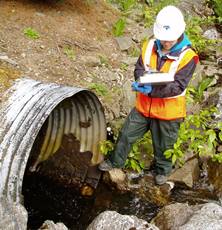After 18 years, the California Industrial General Permit (IGP) is getting a makeover, bringing significant changes for industry. Understanding how these changes affect your business and preparing now for compliance is vital.

Starting July 1, 2015, industries will be required to submit all permit-related documents electronically via the Stormwater Multi-Application Reporting & Tracking System (SMARTs) (https://smarts.waterboards.ca.gov). Before permit documents can be submitted electronically, however, all dischargers, both existing and new, must complete a Notice of Intent (NOI) and certification statement signed by the Legally Responsible Person (LRP). The challenge of complying with the permit will continue once permit coverage has been granted.
Submitting on SMARTs - What does this mean for industry?
Electronically submitting documents via SMARTs will give the public easy and immediate access to permit documents. Common mistakes to avoid include:
- Incomplete permit coverage submittal (e.g., not certified by an LRP)
- Incomplete SWPPP (e.g., lacking prescriptive BMPs and site monitoring plan)
- Incomplete SWPPP Map (e.g., lacking clearly defined drainage areas)
Numeric Action Levels (NALs) and Exceedance Response Actions (ERA) - What does Compliance Look Like?
Another significant change is the addition of Numeric Action Levels (NALs) and Exceedance Response Actions (ERA). If past monitoring data results exceed the NALs, now is the time to assess new BMPs or monitoring strategies to reduce those levels. While exceedance of an NAL is not a permit violation, it could draw more scrutiny and negative attention to a site. An exceedance also bumps a site to a Level One or Level Two ERA, both of which are more-costly levels of compliance.
No Exposure Certification (NEC) - Formalized and More Rigorous
Light industry facilities (Category 10) that self-certified no exposure in the past must now obtain formal coverage under the IGP by submitting NEC permit registration documents electronically via SMARTs. NEC filers will receive a Waste Discharge Identification (WDID) number and will be required to annually recertify that the conditions of NEC are being maintained.
Understanding practical implications of new regulations can be difficult. Farallon personnel have been involved in all areas of stormwater management, from policy development to boots-on-the-ground compliance, and can help if you have questions about how to correctly implement these new stormwater measures at your site. For clarifying information or help in understanding the inner workings of the permit requirements, please contact Lori Pettegrew.
Irvine Office
2355 Main Street, Suite 210
Irvine, California 92614
(949) 222-0870
Oakland Office
180 Grand Avenue, Suite 900
Oakland, California 94612
(510) 879-6804